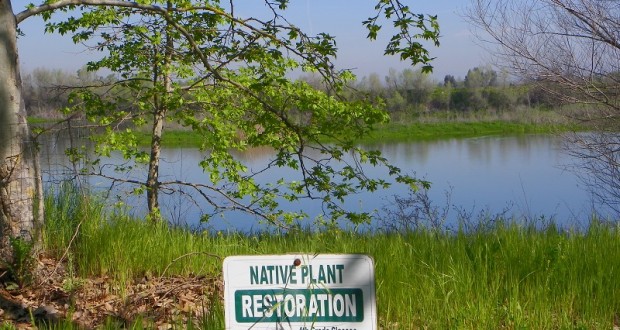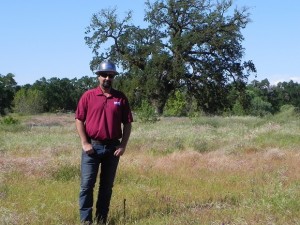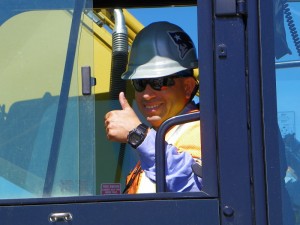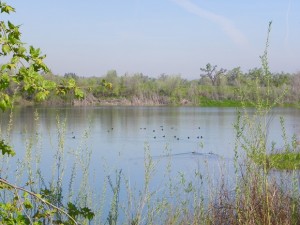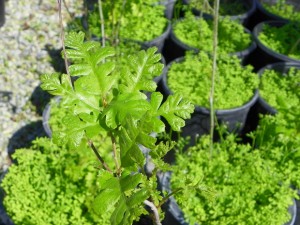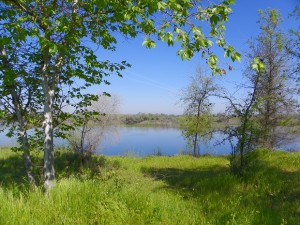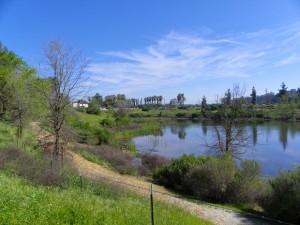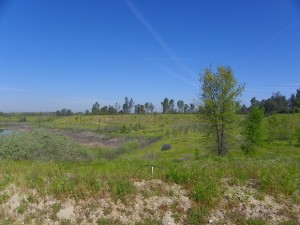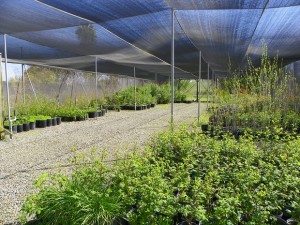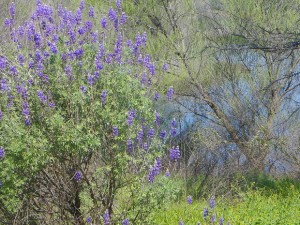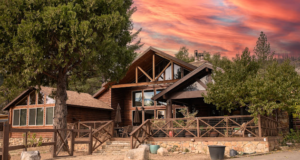MADERA COUNTY — With the Final Environmental Impact Report for the proposed Austin Quarry currently being prepared by Madera County and independent experts, we were invited by Vulcan Materials to take a look at one of their existing quarries in the area. The River Rock Quarry is located along the San Joaquin River in Fresno County off Old Friant Road.
The purpose of this visit was to get a first-hand look at the final mining and restoration process now underway and hear from those involved in the project. We were offered a glimpse into what Vulcan is doing on the River Rock site, along with insight into some of the laws, rules and guidelines under which they operate, including the requirement to reclaim the land. Our hosts for the day were Mike Linton, VP Property and Land Management from Vulcan’s Glendale office, and Rob Pountney who is the manager of the River Rock facility and will eventually transfer over to Austin Quarry.
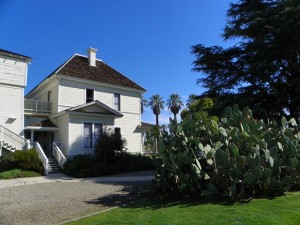 Pountney has a long family history with the River Rock Quarry that dates back two generations before him, father and mother, and grandfather.
Pountney has a long family history with the River Rock Quarry that dates back two generations before him, father and mother, and grandfather.
When the younger Pountney was born, he came home to a house that remains on the River Rock quarry site. The historic house and 20 acres were later donated by Vulcan to the San Joaquin River Parkway and Conservation Trust and the site is now the Trust headquarters
Our drive through the property included some beautiful views of the quarry that will soon complete over 60 years of operation providing materials to build Fresno and Madera counties.
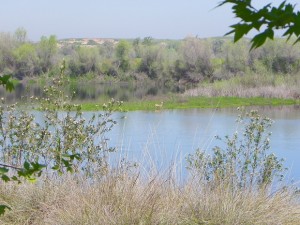
Final mitigation and reclamation activities are expected to be complete within approximately five years. Vulcan Materials claims the distinction of being the nation’s largest producer of construction materials — primarily aggregates (gravel, crushed stone, and sand). The company employs approximately 7,000 people at over 300 facilities.
Before Friant Dam was constructed in the late 1940s much of the San Joaquin River bottom was pristine wetlands from seasonal flooding. After the dam was completed, much of the former wetlands were converted to farmland. In the 1950s, prior operators began mining on what eventually became the River Rock quarry.
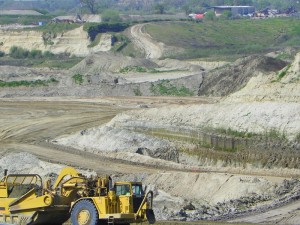 The Surface Mining and Reclamation Act of 1975 (SMARA) required sweeping environmental protections and mandatory reclamation. In 1996 an updated reclamation plan for River Rock was approved requiring all the existing native habitat to be preserved and requiring the mined land to be reclaimed to either seasonal wetlands and wildlife habitat or farmland.
The Surface Mining and Reclamation Act of 1975 (SMARA) required sweeping environmental protections and mandatory reclamation. In 1996 an updated reclamation plan for River Rock was approved requiring all the existing native habitat to be preserved and requiring the mined land to be reclaimed to either seasonal wetlands and wildlife habitat or farmland.
That’s what Vulcan is doing now at the River Rock quarry: working toward fulfilling their commitment for protection of the environment, even as mining and reclamation are ongoing concurrently.
More than 160 species of wildlife have been observed on the property along the river.
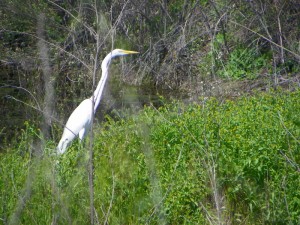 We didn’t see all of them but the peaceful, preserved and reclaimed areas appear to be viable habitat for many, including those creatures that showed their faces and tails that day: rabbits, deer and birds of all sorts came into view.
We didn’t see all of them but the peaceful, preserved and reclaimed areas appear to be viable habitat for many, including those creatures that showed their faces and tails that day: rabbits, deer and birds of all sorts came into view.
We made a brief detour along a trail where native sycamore trees planted over 13 years ago by area students are now beautiful, tall, young trees providing wildlife habitat and shade for students and the public on guided wildlife tours. The team explained that Vulcan frequently involves schools in various restoration projects, a practice aimed at teaching kids at their Partner in Education schools about the importance of conservation.
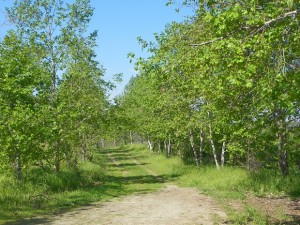 That’s one thing the company wants people to know: they are committed to the entire mining process, through reclamation and beyond. It was hard to argue the point, driving through the River Rock site. Spring had just sprung and the result was an intensive study in the color green. A deer paused on the banks of a reclaimed pond long enough for me to fumble with my camera, replace the batteries, and still get a pretty good shot.
That’s one thing the company wants people to know: they are committed to the entire mining process, through reclamation and beyond. It was hard to argue the point, driving through the River Rock site. Spring had just sprung and the result was an intensive study in the color green. A deer paused on the banks of a reclaimed pond long enough for me to fumble with my camera, replace the batteries, and still get a pretty good shot.
More than 60 local, state and federal agencies are involved in the regulation of this quarry and others like it, according to Vulcan. The planned end-use determined to be the site’s “highest and best use” after mining is reclamation of the site to seasonal wetlands and wildlife habitat (the site’s historic use before Friant Dam) and farmland (most of the site’s use after Friant Dam), and eventually an adaptive recreation plan.
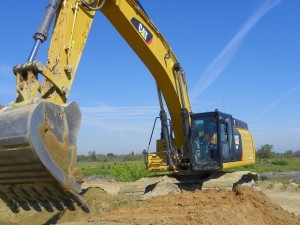 As we came around the bend, the view of trees and pathways gave way to the main event at River Rock: the quarry itself. At this time, the quarry is being mined and reclaimed pretty much simultaneously, so one can see both the active mining operation with big scrapers, as well as the ongoing reclamation and mitigation.
As we came around the bend, the view of trees and pathways gave way to the main event at River Rock: the quarry itself. At this time, the quarry is being mined and reclaimed pretty much simultaneously, so one can see both the active mining operation with big scrapers, as well as the ongoing reclamation and mitigation.
While some areas are being mined, other areas are already replanted with native plants in the process of being reclaimed. Toward that end, there’s a nursery on site that grows a wide range of native grasses, bushes and trees.
Over on the other side of the facility, we encountered the part of the plant where trucks come and go, picking up their many-ton loads for the day. We were at the River Rock quarry long after their rush hour, which peaks early in the morning as construction companies come and go with their loads.
Only a few trucks were present during the time we were there, and as we watched one vehicle being loaded with gravel, it took a minute to realize what was missing from that picture — there wasn’t any dust. That’s because Vulcan uses recycled water to keep the dust down to protect air quality and to be good neighbors.
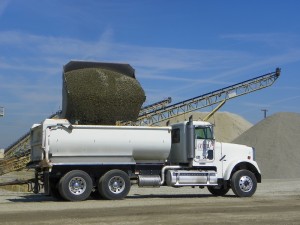 In a 2013 article published in The Business Journal, it was noted that in the Fresno production-consumption region, which includes both Fresno and Madera counties, there were 46 million tons of permitted aggregate reserves, less than 11 percent of the 50-year demand of 435 million tons. Current mining operations in the region were estimated to have less than ten years remaining to meet the projected demand in construction.
In a 2013 article published in The Business Journal, it was noted that in the Fresno production-consumption region, which includes both Fresno and Madera counties, there were 46 million tons of permitted aggregate reserves, less than 11 percent of the 50-year demand of 435 million tons. Current mining operations in the region were estimated to have less than ten years remaining to meet the projected demand in construction.
Vulcan noted that approved mining projects not included in that study or approved after that study have added to region’s aggregate reserves. However, even with those added reserves, there is still a projected aggregate shortage of over 160 million tons over the next 50 years.
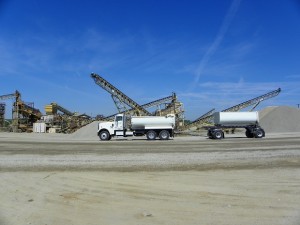 In conversation with my tour guides on this day, they explained that development and redevelopment put a constant pressure on construction companies to come up with aggregate materials needed to do the job of paving and repaving roads. Construction costs fluctuate according to the distance from the quarries where the materials are mined, sorted and stacked into piles, to the construction site.
In conversation with my tour guides on this day, they explained that development and redevelopment put a constant pressure on construction companies to come up with aggregate materials needed to do the job of paving and repaving roads. Construction costs fluctuate according to the distance from the quarries where the materials are mined, sorted and stacked into piles, to the construction site.
It was around this time that I began to reflect on the fact that I’d never been on the premises of a quarry before. In fact, while I’ve spent the last 40 years driving the roads and highways of California, I’ve spent very little time thinking about how the roads actually got there — along with concrete used in the construction of hospitals, buildings, freeways and other elements of the infrastructure we call home. That’s where a company like Vulcan comes in. After a day spent touring the site of the River Rock facility, we won’t take that for granted.
Written by Kellie Flanagan, managing editor of SNO
For more information visit Vulcan Materials and the Austin Quarry.

